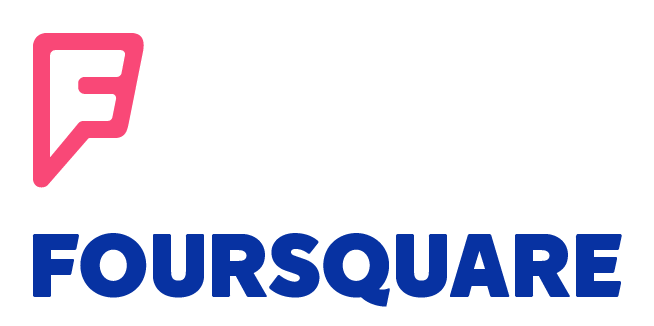
In order to grow as a platform, Foursquare is abandoning the feature central to its brand: the check-in.
The company is in the midst of a rebrand that repositions Foursquare as a local search and discovery app. This, in itself, is not necessarily new; Foursquare has long allowed users to search for nearby bars, restaurants and merchants. But noticeably absent from the forthcoming new Foursquare is the check-in, the feature that rocketed the company to tech-startup stardom at SXSW in 2009. But the company has since outgrown its flagship feature.
The change presents Foursquare with a dilemma that even the most traditional of brands are all too familiar with: How does Foursquare repurpose its image without upsetting its loyal users.
“One of the most challenging things for us is, we have a massive user base,” Jon Steinback, Foursquare’s vp of product experience, told Digiday. “The big purpose of rebranding Foursquare proper is, how do we make sure users understand the changes the app and the company are going through? We have to tell people there’s a whole new Foursquare.”
The redesigned Foursquare, due out in the coming weeks, will make local search more prominent and will feature a new typeface, a new logo but no check-ins. The new logo will be an uppercase F made to resemble a pin, or flag, on a digital map. Gone will be the signature check mark and, with it, checking in from the Foursquare app.
Check-ins are not being completely phased out of the company, though. Foursquare has created a second app, Swarm, solely for checking in and viewing friends’ check-ins.
Foursquare founder and CEO Dennis Crowley, who did not speak with Digiday for this piece, has repeatedly said in the past that he always planned on Foursquare being a local search utility, and that checking in was merely a means to attract users to the app and accumulate location data.
Letting go of check-ins may be a wise decision due to the function’s ubiquity now. While Foursquare popularized checking in, the feature has been adopted to varying degrees by many of the largest platforms in existence. Facebook’s check-in feature is nearly identical to Foursquare’s. Twitter lets users add their locations to their tweets. Snapchat just added a feature that lets users identify their location when messaging someone.
Instagram could even be considered somewhat of a visual check-in platform; users  send updates to friends by taking photos of where they are and what they’re doing at a particular moment. In fact, Instagram was using Foursquare’s mapping technology to allow users to tag photos but has started migrating to Facebook’s maps database.
send updates to friends by taking photos of where they are and what they’re doing at a particular moment. In fact, Instagram was using Foursquare’s mapping technology to allow users to tag photos but has started migrating to Facebook’s maps database.
But now Foursquare must differentiate its brand in local search, which means competing more directly with Yelp and almighty Google.
“When you talk to your friends, they say, ‘I want some place low-key’ or ‘Some place I can take a first date’,” Steinback said. “It has to be personalized. Anybody can make a top 10 list of sushi places. If you like greasy pizza versus thin crust versus deep crust, that top 10 list is going to be totally different depending on who you are, and we want to be able to do that for everybody.”
Media buyers remain bullish on Foursquare despite the challenges of rebranding and competing with well-known search apps. Media agency execs who have spoken to Digiday over the past several months have all said they were impressed with Foursquare’s database of check-ins and how it will enable them to target users based on location and interests.
Those targeting abilities are going to get nothing but better with the new app, according to Jordan Bitterman, chief strategy officer at media agency Mindshare.
“Before I looked at what they had, I thought, ‘Oh my god, this is another start for these guys. They don’t need to be starting again,’” Bitterman said. “Then I got a peek under the hood, and I got really excited about it.”
Bitterman is specifically excited about how the new app will allow for more precise location- and interest-based targeting. The old Foursquare would only let marketers target users based on a user’s check-in history. The new app will allow marketers to target users “implicitly,” Bitterman said; a Foursquare user only needs to be idle in a coffee shop for a certain amount of time for Foursquare to register that user as having visited there, for example. In the past, marketers could only target users when they actively checked in.
At least for advertising purposes, Foursquare doesn’t need the check-in at all.
Still, questions about the size of Foursquare’s user base linger. Foursquare declined to share its number of users. Foursquare’s number of monthly uniques rose from more than 9.1 million last June to 10.3 million this June, according to comScore.
When asked whether the shiny new Foursquare will be able to attract new users, some of whom might still associate it with checking in, Bitterman said, “The jury is out.”
“It has to be one of those things where the users they do have get re-energized about it and share it with their friends and family,” he said. “But as a marketer, I’m rooting for them. Combining location- and interest-based targeting is something we would all love to be using on a regular basis.”
Image via Shutterstock
More in Media

Meta AI rolls out several enhancements across apps and websites with its newest Llama 3
Meta AI, which first debuted in September, also got a number of updates including ways to search for real-time information through integrations with Google and Bing.

Walmart rolls out a self-serve, supplier-driven insights connector
The retail giant paired its insights unit Luminate with Walmart Connect to help suppliers optimize for customer consumption, just in time for the holidays, explained the company’s CRO Seth Dallaire.

Research Briefing: BuzzFeed pivots business to AI media and tech as publishers increase use of AI
In this week’s Digiday+ Research Briefing, we examine BuzzFeed’s plans to pivot the business to an AI-driven tech and media company, how marketers’ use of X and ad spending has dropped dramatically, and how agency executives are fed up with Meta’s ad platform bugs and overcharges, as seen in recent data from Digiday+ Research.






